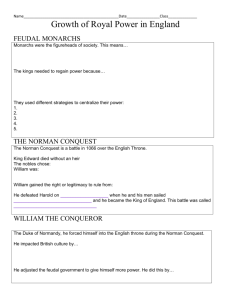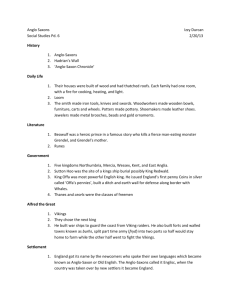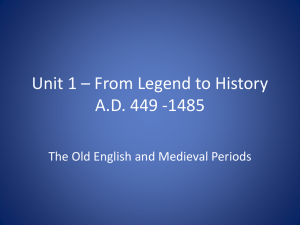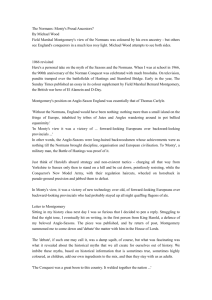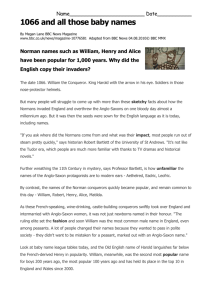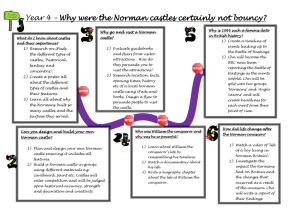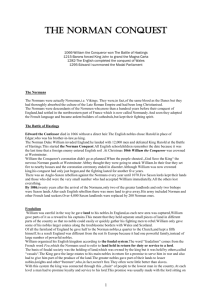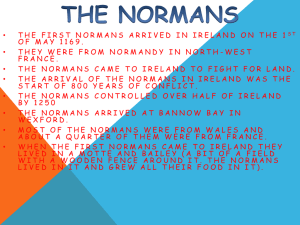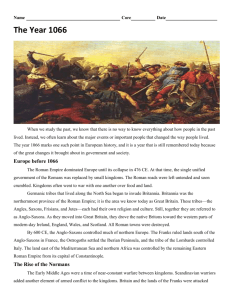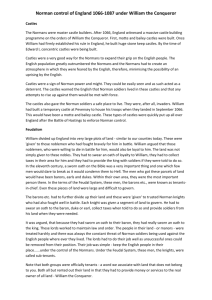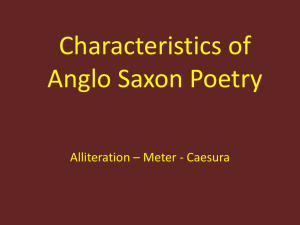Balázs Palotai - WordPress.com
advertisement
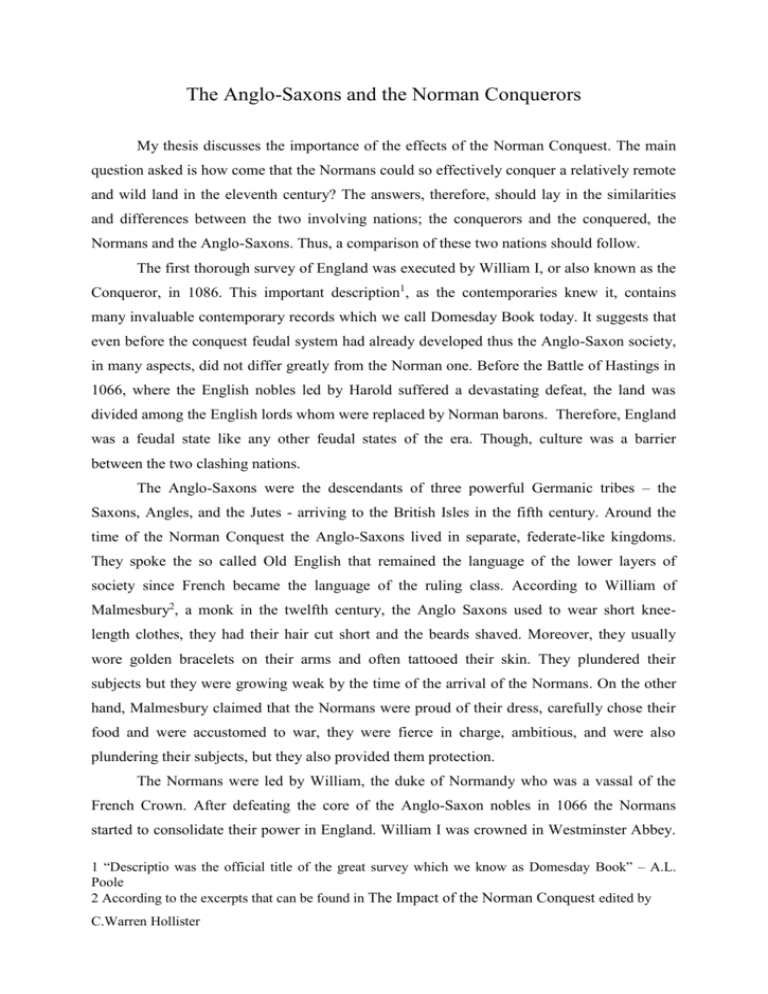
The Anglo-Saxons and the Norman Conquerors My thesis discusses the importance of the effects of the Norman Conquest. The main question asked is how come that the Normans could so effectively conquer a relatively remote and wild land in the eleventh century? The answers, therefore, should lay in the similarities and differences between the two involving nations; the conquerors and the conquered, the Normans and the Anglo-Saxons. Thus, a comparison of these two nations should follow. The first thorough survey of England was executed by William I, or also known as the Conqueror, in 1086. This important description1, as the contemporaries knew it, contains many invaluable contemporary records which we call Domesday Book today. It suggests that even before the conquest feudal system had already developed thus the Anglo-Saxon society, in many aspects, did not differ greatly from the Norman one. Before the Battle of Hastings in 1066, where the English nobles led by Harold suffered a devastating defeat, the land was divided among the English lords whom were replaced by Norman barons. Therefore, England was a feudal state like any other feudal states of the era. Though, culture was a barrier between the two clashing nations. The Anglo-Saxons were the descendants of three powerful Germanic tribes – the Saxons, Angles, and the Jutes - arriving to the British Isles in the fifth century. Around the time of the Norman Conquest the Anglo-Saxons lived in separate, federate-like kingdoms. They spoke the so called Old English that remained the language of the lower layers of society since French became the language of the ruling class. According to William of Malmesbury2, a monk in the twelfth century, the Anglo Saxons used to wear short kneelength clothes, they had their hair cut short and the beards shaved. Moreover, they usually wore golden bracelets on their arms and often tattooed their skin. They plundered their subjects but they were growing weak by the time of the arrival of the Normans. On the other hand, Malmesbury claimed that the Normans were proud of their dress, carefully chose their food and were accustomed to war, they were fierce in charge, ambitious, and were also plundering their subjects, but they also provided them protection. The Normans were led by William, the duke of Normandy who was a vassal of the French Crown. After defeating the core of the Anglo-Saxon nobles in 1066 the Normans started to consolidate their power in England. William I was crowned in Westminster Abbey. 1 “Descriptio was the official title of the great survey which we know as Domesday Book” – A.L. Poole 2 According to the excerpts that can be found in The Impact of the Norman Conquest edited by C.Warren Hollister The king ruled with absolute power, though his most trusted laymen, about two hundred barons followed him to his new dominion. In exchange for their services they received their own lands that were confiscated from their previous owners, the resentful English nobles. It follows that the English society sank bellow the French ruling class. English language survived though whereas French became the prestigious language of government, administration, military, and even the language of law. At the same time, the practice of law was dual in the post Conquest era. William I, the king, was the absolute power and he ruled personally by constantly travelling around in his dominion with his entire household that consisted of his most trusted lay and ecclesiastical men. The right of the final word always belonged to him in all of the cases, especially in those were he had great interests. On the other hand, he allowed the Anglo-Saxon communities to retain their local tribunals, for example the hundreds. Thus, gradually, around the twelfth century, the two practices could merge in the so called common law. However, besides the duality of the two nation’s early legal system, their Churches also differed. William replaced the more vernacular English churchmen to more Romanesque and Latin speaking ecclesiastical people. From 1070, no Englishmen were appointed as heads of bishoprics and abbeys. Still, priests living in small communities and the numerous monasteries were left alone by these changes. Furthermore, Romanesque was also gaining ground in architecture. New structures were constructed, for instance the cathedral of Canterbury and Westminster Abbey. Castles and strongholds were created garrisoned by mercenaries to maintain order which also ensured the long success of the conquest. Still, apart from all the differences the Normans honored the conquered nation. In practice nothing could prove this better than intermarriages. It became a common practice that lords chose native wives for themselves. To conclude, it can be said that apart from the differences of the two clashing nation’s culture – language, law and religion – a lasting and symbiotic relationship was established between the Norman ruling class and the native Anglo-Saxons. Protecting their subjects honoring their ways – in certain aspects – the Normans successfully ruled England until the accession of the Angevins. . Works consulted: The Oxford History of Britain Kenneth O. Morgan Updated Edition 2010. Oxford University Press The Impact of the Norman Conquest C. Warren Hollister 1969. John Wiley and Sons, Inc. New York From Domesday Book to Magna Charta 1087-1216 Austin Lane Poole 1993. Oxford University Press
